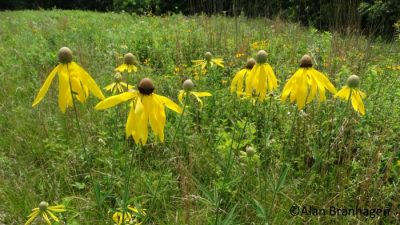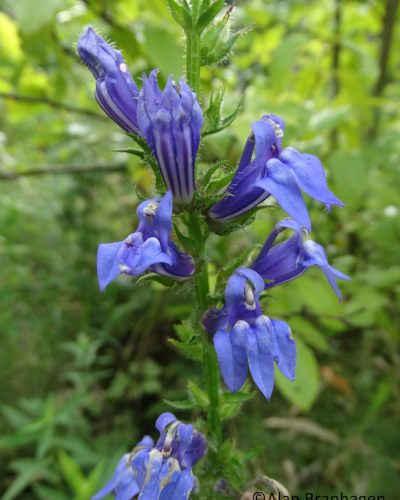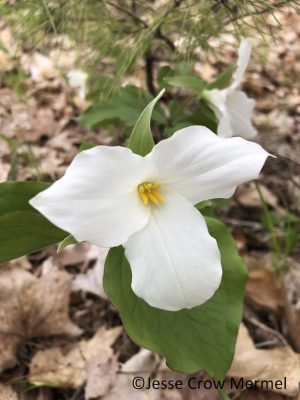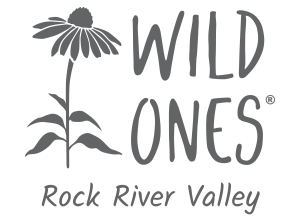Placing Your Order, Potential Crop Failure, and Plant Availability
Plants were selected at the end of 2023 based on vendor inventory and projected expectations for the new year. Weather and other growing conditions can affect the availability of plants. Choice of plant substitution or refund will be available only in the event of shortages. Native plant species not listed on this site will also be available for substitution and sale at the pickup location. IMPORTANT: Order early as supplies are limited! Orders will be filled in the order in which they are received. Orders placed late may not be filled due to the limited number of plants.
Plant Health
We make every effort to ensure the plants that you receive are healthy at the time of pickup. Wild Ones Rock River Valley Chapter cannot guarantee plant materials after they leave our possession. New plants, especially plugs, should be planted and watered soon after purchase. Some plants may need extra care, as well as protection from wildlife, until they have become established.

WHY PLANT NATIVE SPECIES?
Why Plant Native Plant Species? A native plant species is one that occurs naturally in a particular region, ecosystem, and/or habitat. The plants offered in this brochure are indigenous to Winnebago and surrounding counties. They evolved over thousands of years to survive in our weather extremes and local soils, in harmony with other native flora and fauna. Once established, native species require only occasional maintenance—no fertilizers, no pesticides or herbicides, and minimal watering (after they have become established). The native birds, butterflies, bees, and mammals that evolved with native plants depend on them for food and shelter. Native plants also serve as host plants for new generations of beneficial butterflies and insects. Nonnative plants usually do not meet these needs. Even cultivars of native plants, which are bred to please humans, often lose their ability to sustain wildlife; the resulting decrease in genetic diversity impairs their ability to adapt for future survival. This sale is ideal for those new to landscaping with native plants as well as experienced native plant gardeners. Most of the species offered here are easy to grow and will provide years of beauty while helping the environment. We recommend incorporating natives into your existing flower beds—mixed right in with other perennials. Or, create new beds of native plant species for a greater environmental impact.

HOW TO CHOOSE YOUR PLANTS
In order for native plant species to survive, it is important to match the plant requirements with your site’s features. Some species have very specific requirements, while others can adapt to a wider range of environments. Water and light requirements can vary; young plants may need more attention to watering and encroaching plants than those that are mature. In a naturalistic setting, having a diversity of species will provide a full range of color and bloom times. Even in a smaller setting, careful choices will result in the continuous color and harmony considered desirable in both natural and traditional landscapes. Planting three or more of the same species in one area allows for drifts of color, texture, and interest throughout the seasons and helps to attract more pollinators. We highly recommend that you choose plants that will best thrive in your soil, moisture, and sunlight conditions. The information in this brochure lists the best soil conditions and sun exposure for each species.

Extra Native Plants
(Prices range from $3.00 to $14.00) Subject to availability, we will have the following plants at the plant sale on May 9, 10, 11. “+Plants” only as one gallon pots. NOTE: These plants cannot be pre-ordered; shop the in-person plant sale early for best selection.
| Botanical Name | Common Name | Botanical Name | Common Name | |
| Actaea pachypoda | Doll’s Eyes | Juncus tenuis | Path Rush | |
| Adiantum pedatum | +Maidenhair Fern | Liatris pycnostachya | Prairie Blazingstar | |
| Amorpha canescens | Leadplant | Lilium michiganense | Michigan Lily | |
| Aralia racemose | Spikenard | Mimulus ringens | Monkey Flower | |
| Arisaema dracontium | Green Dragon | Oenothera pilosella | Prairie Sundrops | |
| Arisaema triphyllum | Jack-in-the-Pulpit | Opuntia humifusa | Eastern Prickly Pear | |
| Asclepias exaltata | Poke Milkweed | Polystichum acrostichoides | +Christmas Fern | |
| Asclepias sullivanti | Prairie Milkweed | Pulsatilla patens | Pasque Flower | |
| Athyrium filix-femina | +Lady fern | Sanguinaria canadensis | Bloodroot | |
| Caltha palustris | Marsh Marigold | Senna hebecarpa | Wild Senna | |
| Carex grayi | Gray Sedge | Silphium laciniatum | Compass Plant | |
| Carex rosea | Curly Wood Sedge | Silphium perfoliatum | Cup Plant | |
| Caulophyllum thalictroides | Blue Cohosh | Silphium terebinthinaceum | Prairie Dock | |
| Dryopteris marginalis | +Marginal Shield Fern | Solidago speciosa | Showy Goldenrod | |
| Eupatorium perfoliatum | Common Boneset | Symphyotricum leave | Smooth Blue Aster | |
| Eutrochium purpureum | Sweet Joe-Pye Weed | Symphyotrichum sericeum | Silky Aster | |
| Filipendula rubra | Queen-of-the-Prairie | Tradescantia ohiensis | Ohio Spiderwort | |
| Heliopsis helianthoides | Ox-Eye Sunflower | Trillium grandiflorum | +Large-flowered Trillium | |
| Hydrophyllum virginianum | Virginia Waterleaf | Uvularia grandiflora | +Large-flowered Bellwort |



